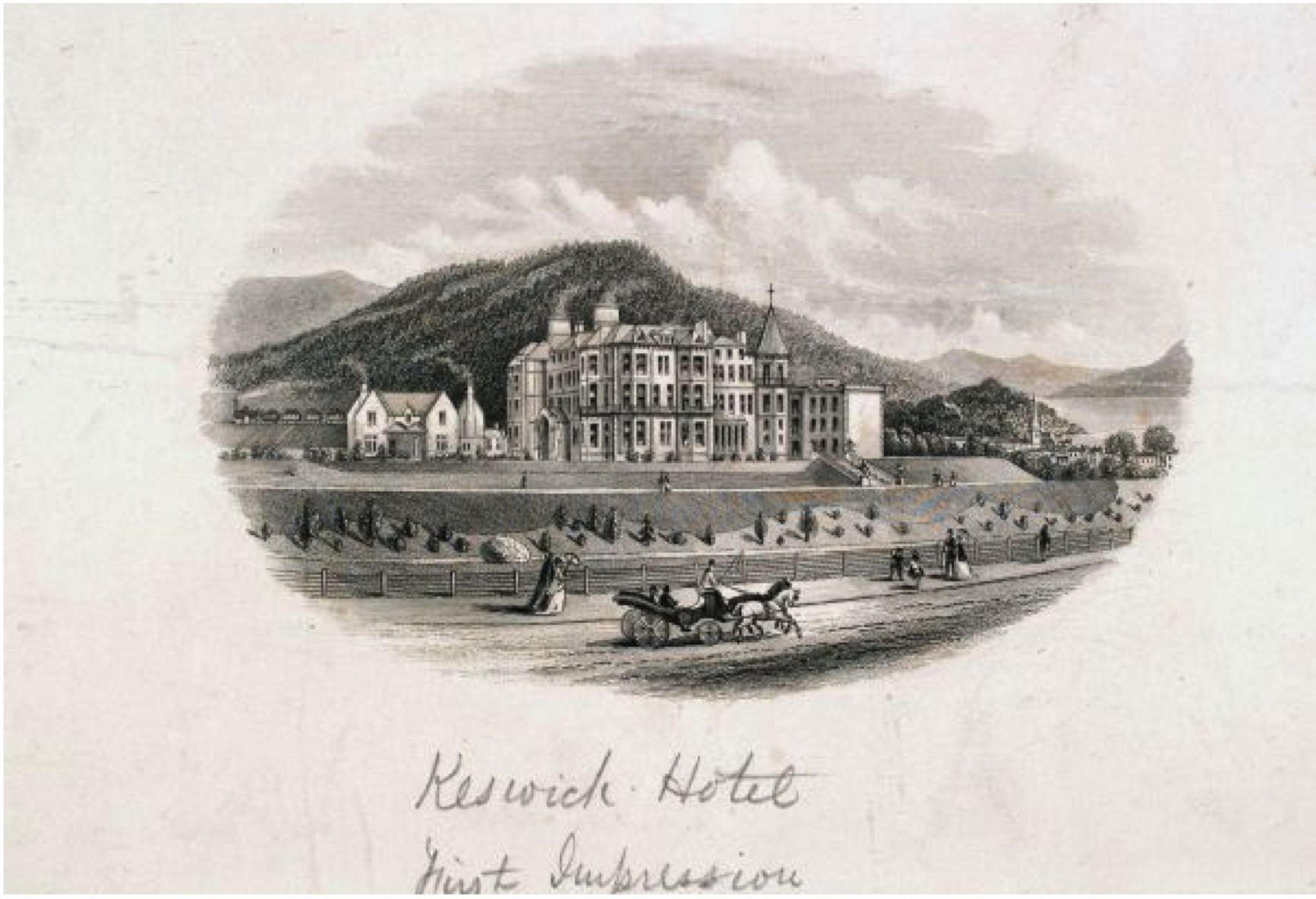Keswick Tourism and Transport
At the beginning of our period Keswick was difficult to reach by carriage, the cultural scouts who did make the journey tended to stay with other resident gentlemen. The turnpike roads connecting Keswick with Kendal, Penrith and Whitehaven via Cockermouth, were approved in the 1760s but were not completed until the early 1770s, after which time the town improved.
In the railway mania of 1844-5, new lines were projected that would have made Keswick an important junction in the lakes and stimulated its growth. Lines were planned to Cockermouth, connecting with the existing railway to Workington; to Penrith, to join with the coming Lancaster and Carlisle Railway; and via Ambleside to Kendal. This last line, which was built only to Windermere from Kendal against the well-known opposition from Wordsworth, provided the basis for the growth of the town of Windermere and the prominence of resorts on Windermere in the later nineteenth century. It is unlikely that it could have been successfully taken on to Keswick.
The fact that the route from Cockermouth through Keswick to Penrith
was not built for another twenty years accounted for the pause in
Keswick’s growth as a town and as a location for excursions. Lines
projected in the railway mania generally depended financially on
goods traffic rather than on passengers. The main goods justification
would await the development of the steel industry in Workington,
and in particular the invention of the Bessemer process in the 1850’s,
which required Durham coke to be matched with the low-sulphur ore
of West Cumberland. Keswick’s renewed growth in tourism from the
mid 1860’s was contingent upon industrial development in Workington.

Keswick Hotel, with Railway Station
